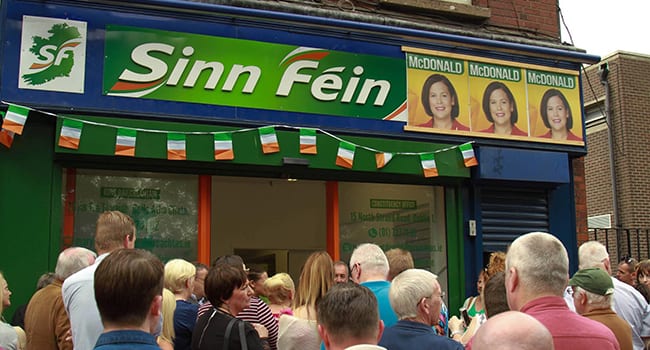 Ireland’s recent election produced an unusual result. You might call it downright peculiar. Or maybe just momentous.
Ireland’s recent election produced an unusual result. You might call it downright peculiar. Or maybe just momentous.
Irish politics has been dominated for the past century by two parties whose origins derive from the civil war that followed the establishment of an independent Irish state. In many cases, family voting patterns were faithfully handed down from generation to generation.
These two traditional parties posted a combined vote share of 80 per cent in the 1937 election. Just over 30 years later – in 1969 – it was only a whisker shy of that. And as late as 2007, their combined total was almost 69 per cent.
Things changed this time around, on Feb. 8. Now, they can muster barely over 43 per cent between them.
The main beneficiary of this spectacular erosion is Sinn Fein (We Ourselves), a left-wing nationalist outfit that’s seen its support dramatically increase over the last several elections. Measured in terms of vote share, it’s become the biggest party in the country.
However, there’s an unsavoury aspect to this that worries a lot of people.
In its modern incarnation, Sinn Fein was founded as the political wing of the paramilitary Irish Republican Army (IRA), the very same folks who were deeply involved in the bloody troubles in Northern Ireland. Many suspect that the relationship continues discreetly, notwithstanding vigorous denials of an ongoing connection.
Sinn Fein’s foundational aspiration of creating a united Ireland remains wholly intact and upfront. But it wasn’t what drove their electoral gains.
The focus was on aggressively addressing material grievances, particularly those centered on housing affordability and health care. In a lengthy manifesto entitled Giving Workers and Families a Break, the party proposed a series of “change” initiatives, to be paid for by increased taxation on higher incomes, banks and multinational corporations.
Translating this electoral success into power will be challenging. Thanks to Ireland’s complex system of proportional representation – 39 multi-seat constituencies and single transferable voting – coalition building is almost essential. And both of the traditional major parties say they won’t strike a deal with Sinn Fein.
In the absence of support from these quarters, Sinn Fein will have to turn to the half-dozen small parties and multitude of independents that hold almost one-third of the seats in the new parliament. Putting together a stable working majority will be a tough climb.
When the new parliament met for the first time on Feb. 20, four parties put their leaders forward for prime minister. None of them came close to the magic number, but Sinn Fein’s Mary Lou McDonald did best in terms of the highest positives and the lowest negatives. So parliament has adjourned until March 5 and the serious bargaining has begun.
Should Sinn Fein come to power, it’ll be interesting to see how they – and their voters – respond to the reality check of having to deliver results. Making promises is very easy. So is channelling grievances.
But as anyone who’s ever had to run something knows, getting a job done is different from talking about it. And exercising power involves trade-offs and the ability to navigate events over which you often have little control.
How Ireland stayed neutral in a world at war by Pat Murphy
With a very small army, virtually no aerial capability and little naval service, Ireland was a sitting duck in the Second World War
Further, a Sinn Fein government would have to operate within the rules of the European Union (EU). For instance, as a member of the eurozone, Ireland’s monetary policy is subject to the European Central Bank in Frankfurt. Consequently, the option of financing government initiatives by simply printing money isn’t available.
There’s also the fact that offshore – primarily American – investment has been an important element in Irish economic development over recent decades. Bashing the multinationals might have unwelcome consequences.
Finally, spare a thought for Leo Varadkar, the outgoing prime minister.
Assuming office in 2017, he seemed the epitome of trendiness, right down to being openly gay and sporting colourful socks. Now his party is in third place. And although he retained his seat, he suffered the indignity of failing to top the poll in his own constituency.
Last summer, Varadkar’s position looked highly desirable relative to that of Boris Johnson, the new British prime minister. Johnson was inheriting a divided party, a tottering government and a seemingly doomed Brexit cause.
Today, Varadkar is out of office, Johnson has a brand new whopping majority and the United Kingdom has formally left the EU.
Political life can be funny.
Troy Media columnist Pat Murphy casts a history buff’s eye at the goings-on in our world. Never cynical – well perhaps a little bit.
The views, opinions and positions expressed by columnists and contributors are the author’s alone. They do not inherently or expressly reflect the views, opinions and/or positions of our publication.


